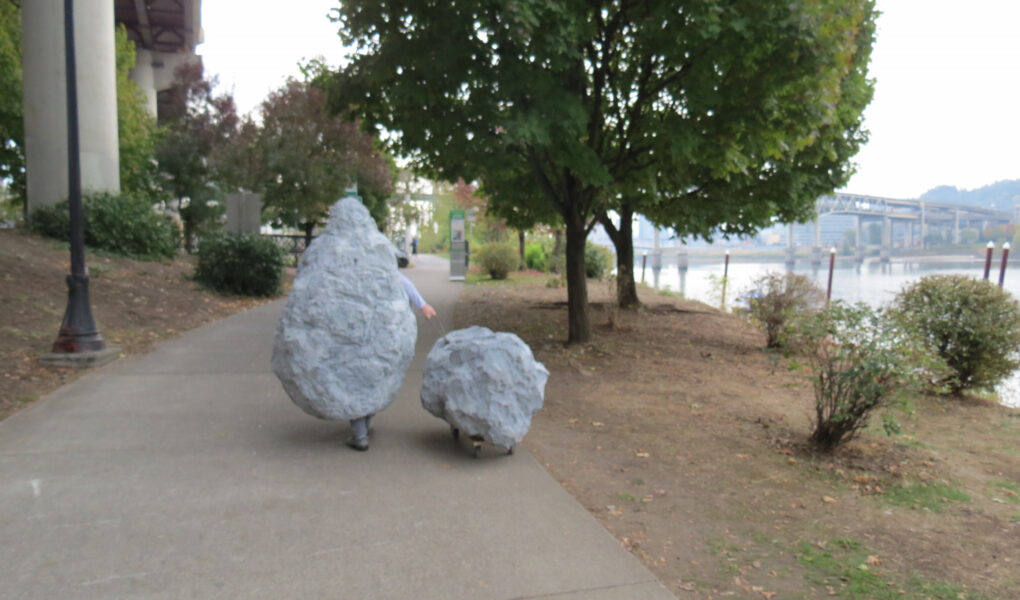by Bean Gilsdorf
Perlitz’s grounding in sculpture underscores the spirit of these practices, explicating the real and symbolic power of objects and their potential to redeem anguish. What does comedy rely on, if not symbolism? Who is more canonically funny than a fallible mortal teetering in a pratfall and landing with a thud? What is more laughably sad than the useful rendered inoperative? As a follow-up to Rocks Moving Rocks, Perlitz produced a book titled Rock Will Move Rocks (2018, edition of 100), with essays, sketches, and project documentation. The launch of the book was accompanied by the production of a series of fist-sized rocks containing music boxes; wind the brass knob on the side of the rock, and the tinny notes of “Amazing Grace” leak out like an invocation. As I held one of these rocks in my hand, I thought of rocks in the landscape, of rocks thrown in riots, of the famous protest slogan of May 1968, Sous les pavés, la plage! (Under the cobblestones, the beach). Amidst these associations, I see an artist coming to terms with the difficult operations of living, finding comedy under the hardness of stones and the abjection of masks, and through comedy, finding grace.
Originally commissioned for the Visual Arts Project by The Ford Family Foundation CRITICAL CONVERSATIONS program element, and edited by Sue Taylor, Professor Emerita of Art History, Portland State University, this essay also appeared in FIGURING, an annual arts journal (shifting title as it progresses) of the same program. Critical Conversations is led by the University of Oregon with partners Portland State University, The Cooley Gallery, Reed College; and PNCA at Willamette University.
The inaugural publication is dedicated to notions of “figuring,” that is, the processing of a moment to inform a position from which to act, the presentation of a form, or expression of a body. By holding space for both indeterminacy and latent form, Figuring conjures histories and possible futures, lived experiences, and propositions for ways that ethereal matter might exist concretely or be allowed to endure as defined by its own logic.
